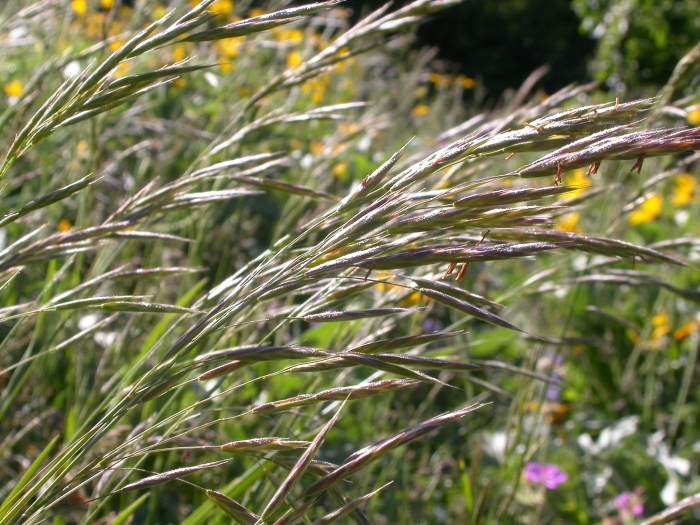Alaska Brome
(Bromus sitchensis)
Alaska Brome (Bromus sitchensis)
/
/

Matt Lavin
CC BY 4.0
Image By:
Matt Lavin
Recorded By:
Copyright:
CC BY 4.0
Copyright Notice:
Photo by: Matt Lavin | License Type: CC BY 4.0 | License URL: http://creativecommons.org/licenses/by/4.0/ | Rights Holder: Matt Lavin | Publisher: iNaturalist | Date Created: 2007-06-20T09:35:48-07:00 |




















Estimated Native Range
Summary
Bromus sitchensis, commonly known as Alaska brome, is a perennial grass native to the moist coastal meadows, open woodlands, and forest clearings of the Pacific coast of North America, ranging from Alaska to Oregon. It typically grows up to 6 feet tall and has a clumping habit with a moderate growth rate. The foliage is a bright green, and the plant produces airy, open flower panicles that can add a delicate texture to garden settings. Alaska brome enters winter dormancy, which allows it to survive colder temperatures by ceasing active growth.
Alaska brome is valued for its adaptability to cooler, wetter climates and is used for erosion control, habitat restoration, and as a forage crop due to its ability to thrive in moist soils. It prefers full sun to partial shade and requires well-drained soils, although it can tolerate temporary flooding. While it is intolerant of aluminum toxicity in the soil, it is generally easy to maintain. This grass is not commonly found in ornamental horticulture but can be used in naturalized plantings or as part of a native plant garden. It has been naturalized in Belgium and New Zealand, where it is sometimes used in similar ways. Gardeners should be aware that in some conditions, it may spread vigorously and could potentially become invasive outside its native range.CC BY-SA 4.0
Alaska brome is valued for its adaptability to cooler, wetter climates and is used for erosion control, habitat restoration, and as a forage crop due to its ability to thrive in moist soils. It prefers full sun to partial shade and requires well-drained soils, although it can tolerate temporary flooding. While it is intolerant of aluminum toxicity in the soil, it is generally easy to maintain. This grass is not commonly found in ornamental horticulture but can be used in naturalized plantings or as part of a native plant garden. It has been naturalized in Belgium and New Zealand, where it is sometimes used in similar ways. Gardeners should be aware that in some conditions, it may spread vigorously and could potentially become invasive outside its native range.CC BY-SA 4.0
Plant Description
- Plant Type: Grass
- Height: 1.5-3 feet
- Width: 2-3 feet
- Growth Rate: Moderate
- Flower Color: N/A
- Flowering Season: Spring, Summer
- Leaf Retention: Deciduous
Growth Requirements
- Sun: Part Shade, Full Shade
- Water: Medium, High
- Drainage: Medium
Common Uses
Bee Garden, Erosion Control, Low Maintenance
Natural Habitat
native to the moist coastal meadows, open woodlands, and forest clearings of the Pacific coast of North America, ranging from Alaska to Oregon
Other Names
Common Names: Sitka Brome
Scientific Names: , Bromus sitchensis, Bromus willdenowii, Ceratochloa sitchensis,
GBIF Accepted Name: